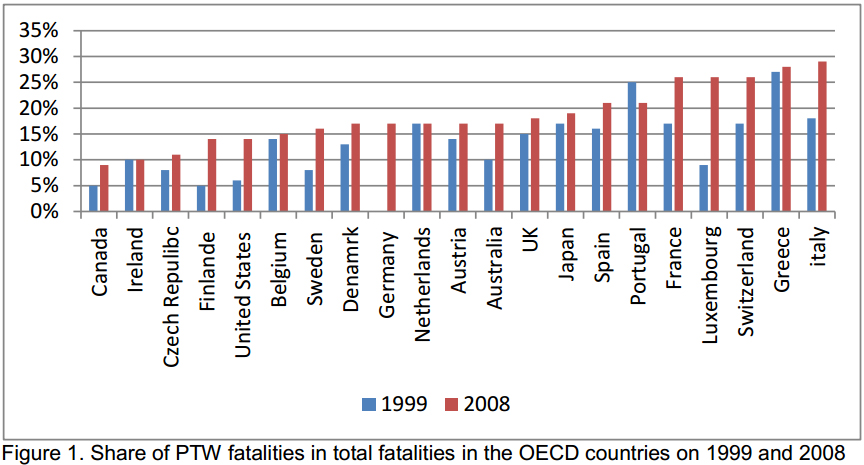
The objective of this paper is to characterise the safety of powered two wheelers in terms of recent crash and fatality trends, typical injuries and crash characteristics in the OECD countries. Traffic fatality data presented in this paper are mainly based on the following sources: the IRTAD database of the OECD/ITF (aggregate data for 32 countries), the CARE database of the European Commission (disaggregated data for EU countries), and national databases (e.g. FARS for the US). This data is analysed in relation to user, vehicle and road characteristics, and are combined with exposure data (e.g. vehice-kilometres of travel) where possible, in order to provide risk estimates. Moreover, the motorcycle crash scenarios are summarised on the basis of in-depth studies. The results suggest that, in OECD countries, motorcyclists are clearly overrepresented in road traffic casualties and are around 20 times more at risk in traffic than a car occupant. PTW trends are not following the overall fatalities decrease; in fact, PTW is the only mode of transport for which the number of fatalities has increased, significantly in some countries. The average age of motorcyclist killed has increased. However, being young, male and lacking experience is still associated with increased PTW fatality risk. The severity of injuries is usually correlated with power of the engine. Almost one third of all PTW fatalities occur at junctions – a proportion notably higher compared to other road users’ – out of which about half at crossroads. Finally, better weather conditions, resulting in more use of motorcycles, from April to October, result in a large proportion of PTW fatalities.
| ID | pc156 |
| Presentation | |
| Full Text | |
| Tags |







